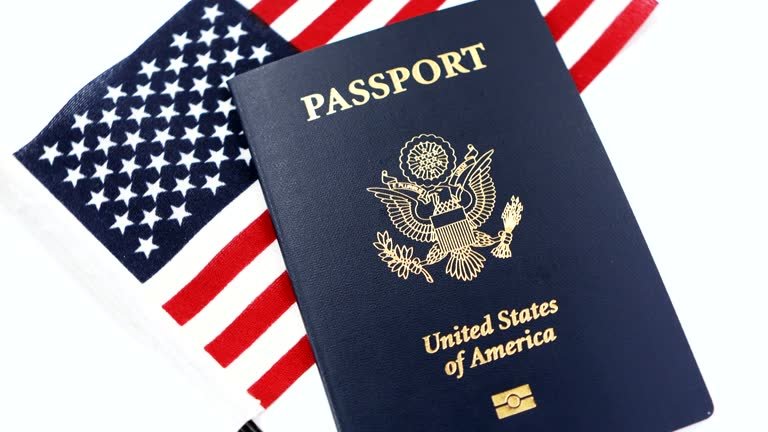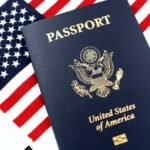The rise of remote work has given birth to the global digital nomad lifestyle. Yet, despite the trend, the United States does not currently offer a dedicated digital nomad visa. Many international remote workers looking to stay in the U.S. must navigate existing visa categories, such as tourist (B-2), business (B-1), or specialized work visas like H-1B or O-1. Understanding which visa fits your situation and how to stay compliant with U.S. immigration and tax laws is essential.
This guide unpacks the visa options that can work for digital nomads, the legal nuances involved, and what requirements you need to meet for each. Whether you’re planning a short visit or a longer stay, this EEAT-friendly guide helps you make informed decisions.
1. B-1/B-2 Visitor Visas (Business & Tourism)
What are they? The B-1 (business) and B-2 (tourist) visas are the most common for short stays. While not intended for remote work, these visas are often used by digital nomads as long as their income is from non-U.S. sources.
Key Requirements:
- Valid passport (6 months beyond stay)
- DS-160 visa application form
- Visa fee (~$160)
- Travel itinerary and proof of return ticket
- Proof of financial means to support your stay
Stay Duration: Typically up to 6 months. Multiple entry visas may be valid for up to 10 years, depending on nationality.
Important Note: You cannot work for or be paid by a U.S. company while in the country on a B visa.
2. H-1B Visa (Specialty Occupation)
This visa is for professionals employed by a U.S. company in a specialized field like IT, engineering, or finance.
Key Requirements:
- Employer sponsorship in the U.S.
- Bachelor’s degree or higher
- Labor condition application filed by employer
Duration: Initial 3 years, renewable to a maximum of 6 years.
Suitability for Digital Nomads: Useful only if you’re working for a U.S.-based company and meet educational/work criteria.
3. O-1 Visa (Individuals with Extraordinary Ability)
This visa is ideal for highly accomplished individuals in fields like arts, science, education, or athletics.
Key Requirements:
- Proof of extraordinary ability (awards, press coverage, expert testimonials)
- Employer or agent sponsorship
Duration: Up to 3 years, with 1-year extensions available.
Suitability for Digital Nomads: Useful for freelancers or consultants who can prove high levels of expertise.
4. L-1 Visa (Intra-Company Transfer)
If you work for a multinational company with offices in your home country and the U.S., this visa allows internal transfers.
Key Requirements:
- Must have worked for the company abroad for at least 1 year
- Transfer to a U.S. office in a managerial or specialized role
Duration: Up to 7 years depending on position.
Suitability for Digital Nomads: Works for professionals being moved between company branches.
5. Tax & Legal Considerations for Digital Nomads
Even without direct U.S. income, being physically present in the U.S. may trigger tax obligations. The IRS considers individuals who spend more than 183 days in a calendar year as tax residents.
Tips to Stay Compliant:
- Limit your stay to under 183 days
- Keep income sources foreign
- Maintain tax residency in another country
- Consider professional tax advice if staying longer
6. Alternatives Being Discussed
Several lawmakers and business groups have proposed a dedicated U.S. digital nomad visa to attract international talent and economic contribution. However, as of 2025, no such visa exists. Until then, nomads must rely on temporary visas and workarounds that comply with current immigration law.
Conclusion
While the U.S. has not yet embraced a dedicated digital nomad visa, there are pathways to stay legally as a remote worker. The B-1/B-2 visitor visa is the most accessible for short stays and non-U.S. income sources. For longer-term options or formal employment, visas like H-1B, O-1, or L-1 may be more appropriate, though they come with stringent requirements.
It’s crucial to evaluate your employment type, duration of stay, and legal risk. Always adhere to U.S. immigration and tax laws to avoid penalties or deportation. With the rise of remote work, future policies may changebut for now, careful planning is your best ally. Digital nomads can enjoy a fulfilling U.S. experience, but only if they understand and respect the system in place.
FAQs
1. Does the USA offer a digital nomad visa?
No. As of 2025, the U.S. does not have a visa specifically for digital nomads.
2. Can I work remotely on a tourist visa in the U.S.?
You can work remotely for a non-U.S. employer, but you cannot work for or be paid by a U.S. company.
3. How long can I stay in the U.S. on a B-2 visa?
Up to 6 months per visit. Some nationalities receive multi-year visas with multiple entries.
4. What are the risks of overstaying a tourist visa?
Overstaying can result in deportation, visa revocation, and a ban on future travel to the U.S.
5. Do I have to pay U.S. taxes as a digital nomad?
If you spend more than 183 days in a year in the U.S., you may be considered a tax resident and required to file taxes.





